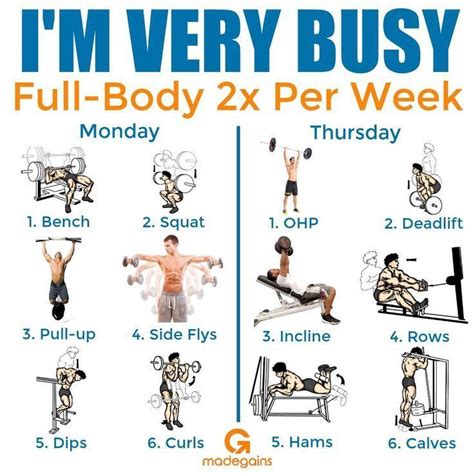Efficient workout strategies: Maximize muscle growth & peak performance with less time?

The Quest for Maximum Results in Minimum Time
In today’s fast-paced world, finding ample time for the gym can feel like an Olympic sport in itself. Yet, the desire to build muscle, enhance performance, and improve overall fitness remains strong. The good news? You don’t need to spend hours upon hours lifting weights or pounding the pavement to achieve remarkable results. By adopting smart, evidence-based strategies, you can maximize your gains and reach peak performance with significantly less time investment. This article will guide you through the principles and practices of efficient workout strategies that deliver.
Key Principles for Time-Efficient Training
Efficiency in training isn’t about cutting corners; it’s about optimizing every minute you spend exercising. Here’s how to make your workouts count:
1. Embrace Compound Movements
Compound exercises are the cornerstone of any efficient workout program. Unlike isolation exercises that target a single muscle, compound movements engage multiple joints and muscle groups simultaneously. Think squats, deadlifts, bench presses, overhead presses, and rows. These exercises not only build more functional strength but also trigger a greater hormonal response, crucial for muscle growth, and burn more calories in less time.

2. High-Intensity Interval Training (HIIT) & Density Training
Forget long, steady-state cardio. HIIT involves short bursts of intense exercise followed by brief recovery periods. It’s incredibly effective for cardiovascular fitness, fat loss, and even muscle endurance. Similarly, density training focuses on completing as much work as possible (sets x reps) within a given timeframe. By minimizing rest and maximizing work, you achieve a significant training stimulus in a shorter period.
3. The Power of Progressive Overload
This is arguably the most critical principle for continuous muscle growth and strength gains. Progressive overload means consistently challenging your muscles by gradually increasing the demands placed upon them. This could be lifting heavier weights, performing more repetitions with the same weight, increasing sets, reducing rest times, or improving exercise form to increase time under tension. Without progressive overload, your body has no reason to adapt and grow stronger.

4. Mind-Muscle Connection: Quality Over Quantity
It’s not just about moving weight; it’s about *feeling* the target muscle work. Focusing on the mind-muscle connection ensures that the intended muscles are actually performing the work, leading to more effective activation and growth. This often means temporarily using lighter weights to perfect form and sensation, ultimately leading to greater gains when heavier loads are reintroduced.
Smart Programming & Recovery for Sustained Progress
Beyond the individual exercises, how you structure your overall training and recovery is paramount for efficient progress.
1. Strategic Workout Splits and Frequency
For those with limited time, full-body workouts performed 2-3 times a week can be incredibly effective, allowing you to hit all major muscle groups frequently. Alternatively, an upper/lower split might work. The key is to ensure adequate recovery between sessions for each muscle group. More frequent, shorter sessions can often be more beneficial than fewer, longer ones.

2. Prioritize Recovery: Fuel, Sleep, Hydration
Your muscles don’t grow in the gym; they grow during recovery. Neglecting recovery negates all your hard work. Ensure you’re consuming enough protein, carbohydrates, and healthy fats to support muscle repair and energy. Aim for 7-9 hours of quality sleep per night, as this is when your body performs crucial restorative processes. Stay well-hydrated throughout the day, as water plays a vital role in every bodily function, including nutrient transport and metabolic processes.

Structuring Your Efficient Workout Week
Here’s an example of how you might structure a time-efficient week:
- Day 1 (Full Body A): Compound Push (e.g., Bench Press), Compound Pull (e.g., Rows), Compound Legs (e.g., Squats), Core.
- Day 2 (Active Recovery/Rest): Light cardio, stretching, or complete rest.
- Day 3 (Full Body B): Compound Push (e.g., Overhead Press), Compound Pull (e.g., Deadlifts), Compound Legs (e.g., Lunges), Core.
- Day 4 (Active Recovery/Rest): Light cardio, stretching, or complete rest.
- Day 5 (Optional Full Body C or HIIT): Focus on areas needing more work, or a quick HIIT session.
- Day 6 & 7: Rest and Recovery.
Each workout could be completed in 45-60 minutes, including a quick warm-up and cool-down.
Conclusion: Smarter, Not Harder
Achieving significant muscle growth and peak performance doesn’t require living in the gym. By focusing on compound movements, implementing high-intensity principles, prioritizing progressive overload, and giving paramount importance to recovery, you can build a powerful, efficient workout strategy that respects your time. The secret lies not in the volume of your training, but in its intelligence and consistency. Commit to these principles, and watch your body transform, proving that less time can indeed lead to more gains.









